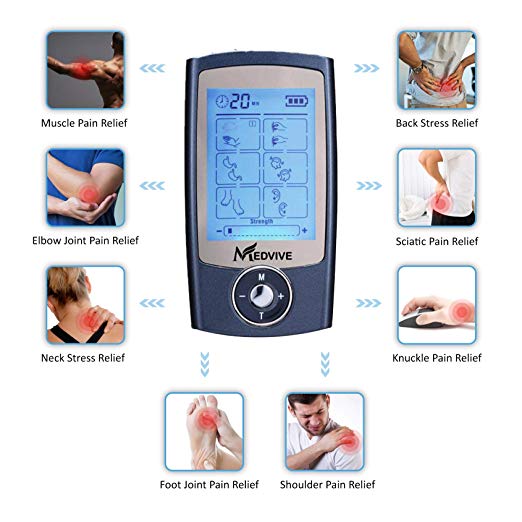Authors, Writers, Publishers, and Book Readers
If an individual is not experiencing sufficient control of pain and other symptoms, electrotherapy—a treatment that directs mild electrical pulses to the problem area—may be an option.
Electrotherapy includes a range of treatments using electricity to reduce pain, improve circulation, repair tissues, strengthen muscles, and promote bone growth, leading to improvements in physical functioning.
Electrotherapy units usually consist of a battery-powered Tens Unit connected by wires to adhesive electrode pads which are placed on the skin. The electrode pads are sticky, so they will adhere to the skin. Once the electrodes are attached and the unit is turned on, a mild electric current is sent to the skin via the electrode.
A number of newer electrotherapy devices bypass the wires, combining electrodes and battery power into a single unit that can be worn inconspicuously on the back, arm, leg, or elsewhere during work or other daily activities. A hand-held controller is used to adjust the level of stimulation.
While a large number of people find electrotherapy helpful, others do not. The medical literature on electrotherapy's effectiveness has been mixed, and not all electrotherapy treatments are supported by research.
Electrotherapy Pulse Massager range in cost from less than $30 to hundreds of dollars. Several of the newer products are available over the counter, offering flexibility for those who can afford them. Devices sold without a prescription are often not covered by insurance, but people with health savings accounts may be able to apply funds from these accounts toward the cost. Trying electrotherapy in a medical or physical therapy setting before purchasing a unit may be helpful since the therapy does not work for everyone. In some cases, a device can be returned if the treatment is not helpful, so saving the receipt is advised.
The Food and Drug Administration (FDA) verifies that these medical devices are safe to use, but does not test whether the devices are effective. Interestingly, the FDA process for approving a medical device is less rigorous then the approval process for drugs, which requires the pharmaceutical company to show evidence of a drug's effectiveness before introducing it to the market.
When Electrotherapy Is Advised
Electrotherapy is typically used in conjunction with other treatments, rather than by itself. For people undergoing physical therapy, electrotherapy may alleviate pain sufficiently for an individual to participate more actively in targeted exercises. Electrotherapy is among pain relief options gaining attention as the potential risks and side effects of opioid (narcotic) medications have become more apparent.
Efforts to use electrical current to aid in healing goes back to ancient times. The modern era of electrotherapy in the United States began with treatment for anxiety and depression, and then a number of potential uses have grown since. Electrotherapy has been used to address chronic pain and chronic fatigue in general, as well as:
Diabetic nerve pain
Fibromyalgia
Wound healing
Stimulating bone growth
Comment
© 2025 Created by Authors.com.
Powered by
![]()


You need to be a member of Authors.com to add comments!
Join Authors.com